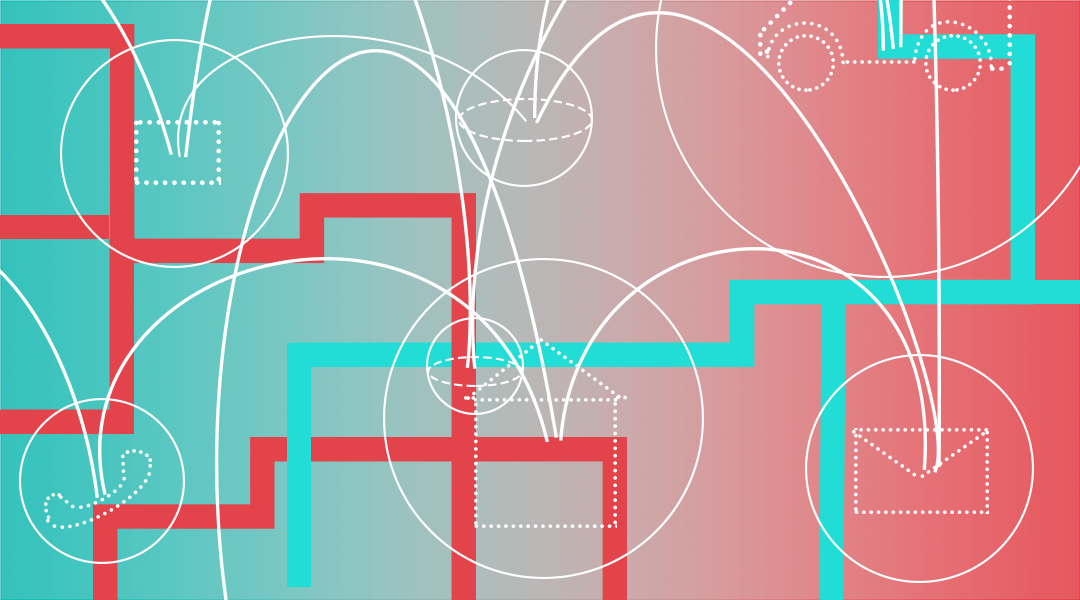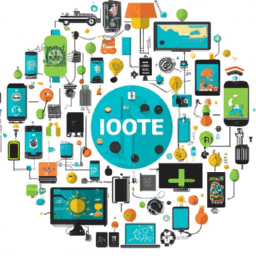
The Internet of Things (IoT) is a vast network of interconnected devices comprising billions of devices. It modernizes the way we travel, conduct business, and monitor our health.
Broadly speaking, the IoT refers to physical entities that are not computers connected to each other via the internet. Medicine bottles, dog collars, self-driving cars, lighting, fitness devices, factory production lines—all these physical entities can be wirelessly connected through embedded sensors, enabling them to communicate and exchange data, forming an ever-growing network.

So, what can we do once we connect these devices? In this article, we will delve into the potential benefits and risks of the IoT, as well as its role in driving the Fourth Industrial Revolution.
History of IoT
The term “Internet of Things” was first coined by Kevin Ashton in 1999, but concepts like “embedded internet” or “pervasive computing” had appeared as early as the early 1980s. The first physical entity to connect to the IoT was a Coca-Cola vending machine at Carnegie Mellon University in the United States. Before that, programmers had connected the vending machine to APRANET (the precursor to today’s internet) to ensure it was stocked and the drinks were cold.
However, it wasn’t until 1999 that Ashton, then a manager at Procter & Gamble, truly formed the concept of the IoT. His initial proposal was to use an IoT to monitor the flow of company products in the supply chain through radio frequency identification (RFID) tags, ensuring store shelves were stocked, identifying weaknesses in the supply chain, and improving turnover efficiency.
This idea quickly gained attention and recognition. By 2010, major global companies and startups, including IBM, Cisco, Gartner, and Nest Labs (acquired by Google in 2014), were experimenting with and developing IoT technologies.
How IoT Works
Although the concept of IoT is somewhat abstract, it already has many applications. As long as a device can connect to the internet and transmit data through embedded sensors, it can be considered an IoT device.
The IoT is a platform for connecting and synchronizing devices, essentially a software for managing and automating connected devices. It acts like a conductor of an orchestra, ensuring that connected devices work harmoniously, collect and distribute data, convert data between different protocols, and store and analyze data to provide recommendations and diagnose potential issues.
Applications of IoT
One prominent example of IoT applications is the “smart home.” It connects devices, including air conditioning, lighting, media, and security devices, making home life easier and more efficient. For instance, your garage door opener can connect with multiple home devices to inform them of your return. Therefore, before you enter your home, the lights and air conditioning may turn on, and your smart coffee machine might have brewed a cup of hot coffee waiting for you.
Voice-controlled devices in smart homes can also assist users with visual and mobility impairments in navigating their homes. Embedded devices (like cochlear implants for the hearing impaired) connected to alarm systems can serve the same function.
Fitness trackers, real-time disease sensors, and various connectable diagnostic devices are transforming the healthcare industry through the “medical IoT.” A notable application is swallowable sensors. These are tiny devices capable of monitoring intestinal diseases, helping improve our diets or notifying caregivers or family members when elderly patients forget or mismanage their medications.
On a larger scale, by collecting and analyzing big data through smart sensors and public meter networks, the IoT is driving the development of “smart city solutions.” These solutions aim to optimize urban resource management, transportation networks, and living conditions, such as synchronizing traffic lights to optimize traffic flow or monitoring urban air quality. Monitoring water and energy consumption can provide insights for creating resource-saving solutions. A typical example is providing appropriate energy storage solutions to businesses and households connected to the urban smart grid.
The above are just a few examples among many IoT applications. When combined with artificial intelligence and machine learning, the IoT will offer even more possibilities for its connected devices. There is nothing it cannot do, only what you cannot imagine.
Privacy and Security of IoT
Like any technology, the IoT has its pros and cons. Convenience and efficiency are certainly positive factors, but we must remain vigilant about the security implications and vulnerabilities that come with the interconnectivity of IoT.
As sensors and monitoring become more prevalent in public spaces, more personal identifiable information is being collected and stored, raising issues of consent and transparency in data processing. Smart cities can improve citizens’ lives, but reasonable policies must be established to prevent excessive data collection. For example, smart emergency service systems need to have built-in regulations to limit the information they can capture, how long it can be stored, and who can receive it.
Another equally significant challenge for IoT is protecting connected devices from hacking. Through interconnectivity, hackers can gain access to the entire IoT’s information through any single device. For a city managed by IoT, this challenge is not just about protecting personal data; it also involves security issues, such as preventing hackers from manipulating air and water quality or food supplies.
As IoT continues to grow, the increasing number of connected devices makes protecting the information stored on these devices even more challenging. IoT security has become an independent field of research, requiring innovative solutions to protect us from threats and breaches.
From the perspective of protecting personal data, there are many small tips available online to help you enhance your data security. Regulators are also working to establish regulations related to IoT privacy and security. The EU Data Protection Working Group and the US Federal Trade Commission published reports in 2014 and 2015, respectively, assessing the regulatory challenges posed by this emerging technology.
Effectively managing and monitoring the IoT is a perennial topic. Experts say that with the advancement of IoT technology, establishing standards is a necessary measure to avoid security incidents.
Despite these challenges, many are actively welcoming an era dominated by smart devices. Although IoT is still in its infancy, we are confident that it will ultimately change the world.
This article is a translation, reviewed by Liu Tianyu. The original English text is from Advanced Science News, available at:
